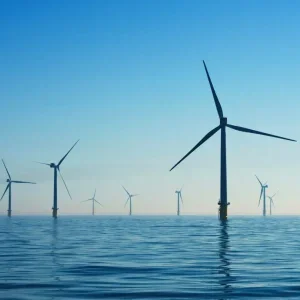Efforts to save Columbia river salmon by drawing down reservoirs in the northeastern US may limit recreational opportunities at two of eastern Washington’s most popular water playgrounds. Under various proposals being considered by federal agencies, more water would be drawn from lake Roosevelt (Grand Coulee dam) and less pumped into Banks lake during some summers. (Banks lake is the irrigation water supply reservoir created by pumping in Grand Coulee water). The National Marine Fisheries Service (NMFS) may require the steps so more water remains in the Columbia river to help migrating salmon.
However, lower water levels in the two lakes would render some docks, boat launches and swimming areas useless during the peak tourist season. Biologists say the drawdown could also damage trout and other resident fish. Spokane and Colville tribes fear it would expose archaeological sites to vandalism.
NMFS officials say they will not discuss any proposal until later this summer, after the agency releases its draft biological opinion of actions needed to save salmon. It is uncertain when any changes would be implemented, but they are not expected this year.
Lake Roosevelt, which is the Columbia river reservoir that stretches 240km behind Grand Coulee dam, is the most popular boating destination in eastern Washington. About 1.3M people will visit lake Roosevelt national recreation area this year, according to estimates from the National Park Service.
The reservoir is considered full when its surface is 393m asl. To control spring flooding, the reservoir is sometimes drawn down as low as 368m. But under current summer regulations it cannot be drawn lower than 390m; as any lower water levels will affect recreational facilities.
According to various state and federal sources, NMFS is considering proposals to draw lake Roosevelt down 1.5-3m lower than the current minimum for summer. It would only be done during years when there is below-average runoff from the mountains. Any drawdown would close at least four of the 18 boat launches on the reservoir, John Reynolds, the regional director for the National Park Service, warned in a letter to federal officials charged with salmon restoration.
The issues are much the same at Banks lake, a 43km long irrigation reservoir behind Dry Falls dam. The artificial lake is located in a coulee that was dry until 1951, and is now kept full with water pumped from the Columbia river at Grand Coulee dam. This water then flows into irrigation canals that lead to 202,350ha of Columbia basin farms. At full pool, the surface of Banks lake is 477m asl.
NMFS is considering proposals to reduce its summer elevation by 1.5-3m.






